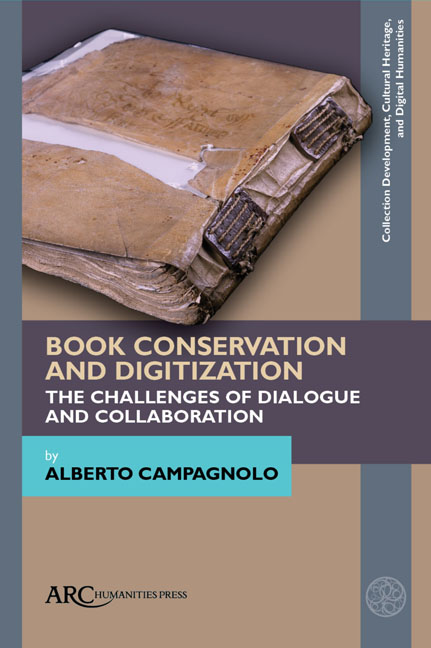Chapter 10 - Spectral Imaging to Aid Preservation and Conservation of Cultural Heritage
Published online by Cambridge University Press: 20 November 2020
Summary
SPECTRAL IMAGING FOR book conservation has been slow to develop, with many of the previous uses in the conservation realm being to look at underdrawings on painting. The focus on palimpsests and hidden text tended to conceal the more diverse uses of spectral imaging for assisting conservation decision-making. There are a range of applications for using spectral imaging, and collaborations between preservation and conservation professionals are a critical component of how specific institutions have integrated and begun to utilize spectral imaging as part of their conservation toolbox. New uses of these existing imaging technologies have been presented or instigated as questions arise from conservation, scholars, conservation science, and curatorial colleagues. These questions can include: how to track changes over time before discoloration or fading appears, how to assess conservation treatments as they are being developed so as not to cause harm in the long term, and how to facilitate better understanding of construction techniques in medieval printing or cartography, non-invasive identification of pigments and inks, comparison of visibly similar inks, pigments and handwriting, and of course, recovery of redacted text.
Spectral imaging measures the reflectance of materials to assess their chemical composition. This is similar to remote sensing imaging with spectral measurements through the atmosphere to calculate the intensity of spectral differentiation from areas of interest in the region being imaged. The response from a surface of a material can be characterized by the percentage of incoming energy (illumination) it reflects at each wavelength across the electromagnetic spectrum. Its spectral reflectance curve is an essentially unchanging property of the material. An important factor for cultural heritage materials is that chemical change or environmental deterioration can modify the spectral response.
One of the challenges for conservation laboratories is how to integrate spectral imaging with digitization procedures, even though many of the types of images captured with spectral imaging are already utilized for conservation purposes, for example, ultraviolet and infrared imaging. Throughout this chapter, the term “spectral” imaging will be used as opposed to multi or hyper. These terms refer to the number of spectral bands in an imaging system, and more than ten bands is considered “hyper”; however, some colleagues refer to hyper as contiguous bands, so to be inclusive, the term spectral will be used.
- Type
- Chapter
- Information
- Book Conservation and DigitizationThe Challenges of Dialogue and Collaboration, pp. 169 - 178Publisher: Amsterdam University PressPrint publication year: 2020



